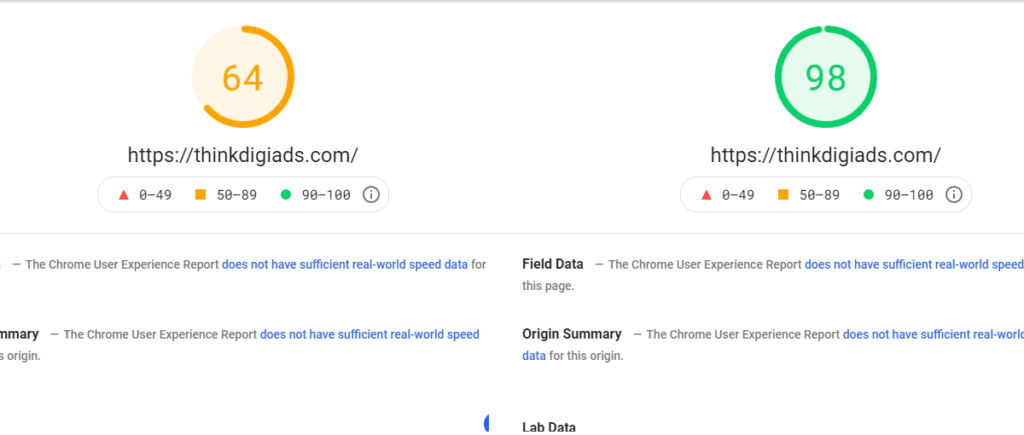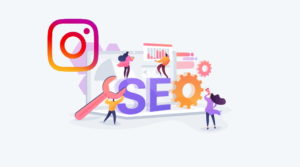Thinking why you’re not ranking #1 for your focus keywords in Google? You might just be making one of the SEO mistakes a lot of site owners make. Search engine optimization (SEO) is a very important aspect of your online marketing strategy. It helps your site rank higher in search engine results pages (SERPs), increases traffic, and ensures that your target audience can find you.
Google puts a strong emphasis on good quality content that really benefits the user. It has little tolerance for bad practices which means that errors can be costly.
SEO mistakes can result in penalties which lead to poor website rankings. This is the last thing any business wants, we’ll give you an overview of SEO mistakes and how to avoid them.
Table of Contents
#1: The faster the better
The most common SEO mistake is site speed. The faster your site, the more Google will favor it. There’s a very useful tool from Google itself to check your site speed: Google PageSpeed Insights. This tool gives you an overview of what aspects need improvement to boost the speed of a particular page.

One of the recommendations is to optimize your images. A lot of websites have images that are relatively large, which take a lot of time to load. Resizing your images can speed up the loading time. If you have a WordPress site, you can do this easily by installing a plugin that does that for you.
Another tip is to enable browser caching and gzip compression. Both of them will speed up your entire site. The first makes your site faster to load for returning visitors and the latter compresses static files, which makes them faster to load into your browser.
In the case of a WordPress install, we also recommend taking a good look at the plugins that are activated. Are you actually using all of them? Perhaps some of them can be replaced by another plugin that combines those functions? The best advice we can give you on this topic is that less is more. The fewer plugins that are activated, the faster your WordPress site can be loaded.
#2: Wrong keywords
If you want to rank in Google you have to make sure that you’re using the right keywords for every page. One of the biggest SEO mistakes is that site owners are optimizing for too generic keywords. If you are a relatively small business that wants to rank for ‘rental car’, you’re aiming too high. You should try to come up with something more specific than that. Otherwise, you’re competing with all the car rental companies all over the world, which is impossible to do! So at least make sure you add the area in which your company is located to the keyword. This will make the keyword more long tail.
The longer and more specific the keywords are, the higher your chances of ranking for this keyword. Of course, this also means that the search volume for this keyword decreases, but you can compensate for this by optimizing a lot of pages on your site for different long-tail keywords. Your site will eventually gain more traffic for all of these keywords combined than it ever would if you optimized for one main keyword.
#3: Lack of visit to your site
Metadata is what appears on search engine result pages (SERPs) when a website comes up for certain queries. It includes the title of the page and its meta description. The page title is still one of the most important ranking factors for Google, so you have to make sure it’s optimized correctly for every page. This means adding the relevant keyword to each particular page and making sure that your page title isn’t too long. If your page title is too long (currently 400 to 600 pixels), it will get cut off in Google. You don’t want potential visitors to be unable to read the full title in the SERPs.
The meta description is not a ranking factor, but it does play an important part in optimizing your Click Through Rate (CTR). CTR gives some insight into how likely potential visitors are to actually click on your site in the SERPs. If you optimize your meta descriptions with clear and attractive extracts on what potential visitors can find on your site, it becomes easier for them to see if the information they’re looking for is on that page. The more likely potential visitors are to think your site will provide an answer to their search query, the more traffic a page will gain.
#4: No call to action for your visitors
Once visitors are on your site, an important goal is to keep them on your site. You don’t want your visitors immediately bouncing back to Google once they have read something on your site. This is why you need to encourage visitors to click through your site. The best way to do this is to create a call-to-action (CTA), which usually is a button that offers an action to your visitor. This can be, for instance, a ‘buy’ button on a product page, or a ‘sign up’ button for the newsletters.
Make sure that every page has one call-to-action, so the goal of the page is clear. If you add multiple buttons, you lose the focus of the page and your visitors won’t get where you want them to go. So think about what the right goal is for every page. Also, make sure that the CTA stands out from your design, so it’s clearly visible and cannot be missed. If the button blends into the design of your page too much, it will attract fewer clicks. So make it stands out: don’t be afraid to use a distinct color!
#5. Not optimizing your website for mobile
Mobile devices account for approximately half of all internet traffic worldwide. This means that if a website isn’t mobile-friendly, it could be alienating half of its visitors.
It’s not just potential customers who will be put off either. Since 2018, Google has been using mobile-first indexing which means it favors websites that work better on mobile devices.
A great way to test if your site is – at least – mobile-friendly is to use Google’s mobile-friendly test. This gives you an indication if your site is fit for displaying on mobile devices. But don’t stop after checking this. The best advice we can give is to visit your site on your mobile phone. Browse your own site for a while and try to click on every button, image, and link to see what happens. Is everything working as expected? Can you actually purchase something on your site while using your mobile phone? Are all pages displayed correctly? You might find you’ll have some work to do!
#6. Not using analytics
Analytics plays an important role in SEO. Among many other things, the data acquired from free platforms such as Google Analytics can tell businesses a lot about their website including:
- How much traffic it’s getting
- Where this traffic is coming from
- Which keywords are attracting visitors
- If your paid advertising is working
- Which pages are popular
- How long people spend on your website
- What’s driving conversions
These insights are incredibly valuable to any business because they enable them to improve their campaigns and correctly identify where they should be investing their time and money.
Conclusion
If you’re ready to get started, the good news is that it’s easier to implement than you may think. It does involve installing a code on your website but this is something you can copy and paste so even beginners can do it themselves. Google also provides a step-by-step guide to getting started with Analytics. This will provide you with all the information you need.
If you’re still not convinced, have a read of this article which explains SEO tips and tricks to help drive more organic traffic to your site.




